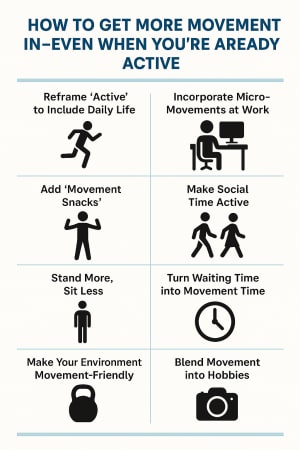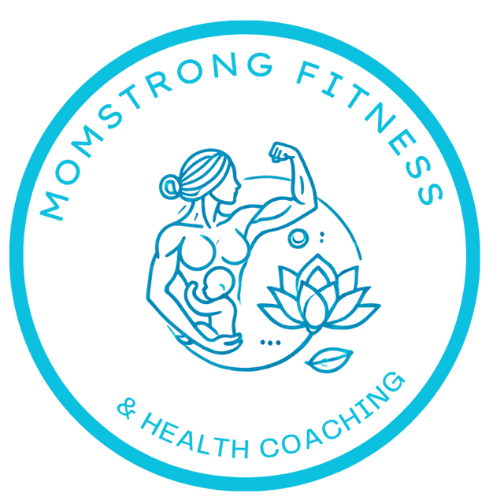
If you already work out consistently, you might think you’ve checked the “daily movement” box. But here’s the thing—being active for an hour a day is fantastic, yet it’s still possible to be sedentary for the other 23 hours. And research shows that long periods of sitting can impact health, even for regular exercisers.
The good news? Small, intentional movements throughout the day can make a big difference in energy, mobility, and overall well-being. Here’s how to add more movement into your life—even when you’re already active.
1. Reframe “Active” to Include Daily Life
Many people think of activity as their scheduled workout, whether it’s lifting weights, running, cycling, or attending a class. But our bodies thrive on frequent movement, not just one burst of activity. That means looking for ways to move in everyday situations—walking to do errands, playing with your kids, or even taking the stairs instead of the elevator.
Pro Tip: Track your daily step count, not just your workout time. This gives you a fuller picture of your actual movement.
2. Incorporate Micro-Movements at Work
If you have a job that keeps you at a desk, add small bursts of movement into your day:
Stand up every 30–60 minutes.
Walk during phone calls or meetings.
Keep resistance bands nearby for a quick 5-minute stretch or strength session.
These micro-breaks improve circulation, reduce stiffness, and boost focus—without disrupting your workflow.
3. Add “Movement Snacks”
A “movement snack” is a short burst of activity—think 2–5 minutes—that you sprinkle throughout your day. Examples include:
10 squats while waiting for your coffee to brew
A quick set of push-ups before lunch
Shoulder mobility drills between emails
These mini-sessions don’t replace your workout, but they keep your body from being idle for too long.
4. Make Social Time Active
Instead of always meeting friends for coffee or a meal, consider:
Going for a walk together
Trying a new group class
Playing a casual sport like pickleball or tennis
Blending movement with social connection keeps you active without feeling like a chore.
5. Stand More, Sit Less
Even if you exercise regularly, long stretches of sitting can contribute to poor posture, tight hips, and back discomfort.
Try:
A standing desk for part of your workday
Watching TV while standing or stretching
Doing chores like folding laundry on a countertop instead of a couch
The more you can break up sitting time, the better your overall movement profile.
6. Turn Waiting Time into Movement Time
Waiting for water to boil, laundry to finish, or an appointment to start? Use those moments for:
Calf raises
Core engagement drills
Gentle stretching
These tiny opportunities add up over weeks and months.
7. Make Your Environment Movement-Friendly
Set yourself up for success by creating visual reminders to move:
Keep a yoga mat unrolled in the living room
Place a stability ball near your desk
Leave a jump rope or kettlebell in a spot where you’ll see it daily
If it’s convenient, you’re far more likely to use it.
8. Blend Movement into Hobbies
If your hobbies are mostly sedentary, mix in active variations:
Listen to podcasts while walking
Garden instead of scrolling social media
Take active photography walks instead of shooting from one spot
You’ll get to enjoy your passions while moving more.
The Bottom Line
Being active is more than just showing up for your workout. Movement is about what you do all day long. By weaving in short, frequent bursts of activity, you can boost your energy, improve recovery, and support your overall health—without needing to overhaul your routine.
Remember: The goal isn’t to work out constantly—it’s to keep your body in motion as much as possible. Even small changes in daily movement can compound into big results over time.



